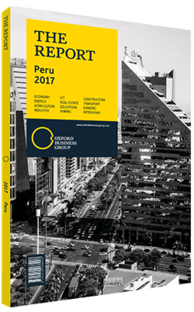Juan Varilias, President, Association of Exporters (ADEX): Interview

Interview: Juan Varilias
What infrastructure developments are needed to improve the management of water resources, and how will that impact productivity?
JUAN VARILIAS: Although it is true that traditional exports like extractive resources have historically led Peruvian exports, agro-industry is beginning to play a much more significant role. Over the last 15 years the sector has experienced a complete transformation thanks to innovation and foreign direct investment, and is today one of the strongest and most resilient sectors contributing to the country’s GDP. Peru’s agricultural products can be found on all continents, and the country has successfully been able to position itself abroad as an important agro-producer as a result of a very strong commitment to enhancing trade through bilateral and multilateral trade agreements.
However, the lack of infrastructure development in agriculture has been one of the main reasons why the growth of exports has been hampered. Although the country is rich in water resources, they are not evenly distributed from a geographic point of view. There is a need for more irrigation projects that help manage water resources in the highlands and its distribution to the lowlands. Such projects, together with enhancing the country’s connectivity through the construction of more roads, will have a significant impact on the ability to manage water resources.
Greater autonomy for the National Water Authority is also necessary to improve water use and consumption through an inventory of all the existing wells in the country. Moreover, there is a need to invest in channelling and increasing the resources available to reservoirs. All these efforts combined would allow adding 200,000 ha of land for farming.
More investment in knowledge and technology would allow rural communities to increase their productivity levels, and ultimately link them to value chains. As the country’s complex geography has been an obstacle to greater integration of rural communities into value chains, road infrastructure becomes essential to the goal of doubling exports.
What role does the Asia-Pacific Economic Cooperation (APEC) play in increasing Peru’s fresh produce exports to Asia?
VARILIAS: Increasing connectivity between member economies is at the core of APEC’s activities. The fact that APEC is comprised of some of the most important economies in Asia and Latin America will certainly play an increasingly important role in enhancing Peruvian exports in general, and fresh produce exports in particular. The same way that it took more than 10 years to penetrate the US market with products such as avocado, it will take time to increase fresh produce exports to China. It is important to keep in mind that agro-exports have only become relevant to Peru’s economy in recent years.
However, a great deal of progress has been achieved, modern techniques learned and new technologies applied, allowing Peruvian fresh produce exports to reach any market in the world. APEC plays a crucial role in enhancing exports to China as it overcomes barriers to trade, such as higher tariffs or limited access to supply chains in the country.
How does the Pacific Alliance enhance food and agriculture supply chains in Peru?
VARILIAS: The Pacific Alliance enables its member states to integrate their domestic supply chains into global supply chains. The main goal of the alliance when it was created was to build bridges between Latin America and Asia.
Today, expectations are being met and, although there is still a long way to go and much room for further integration, there are ongoing discussions by member states to combine their efforts in cumulation of origin, and how to take advantage of integration to be able to supply large markets such as China or Japan.
You have reached the limit of premium articles you can view for free.
Choose from the options below to purchase print or digital editions of our Reports. You can also purchase a website subscription giving you unlimited access to all of our Reports online for 12 months.
If you have already purchased this Report or have a website subscription, please login to continue.

